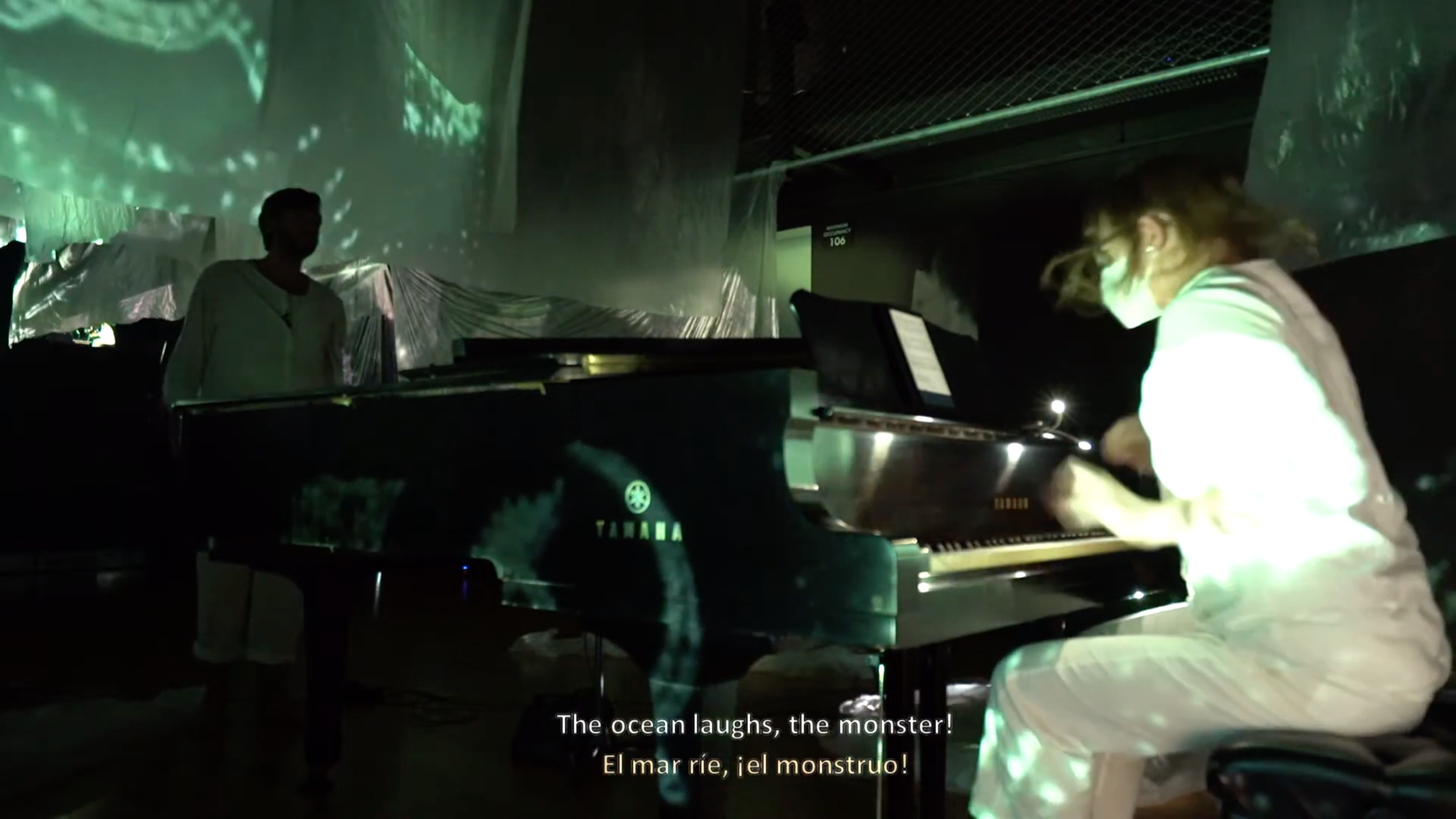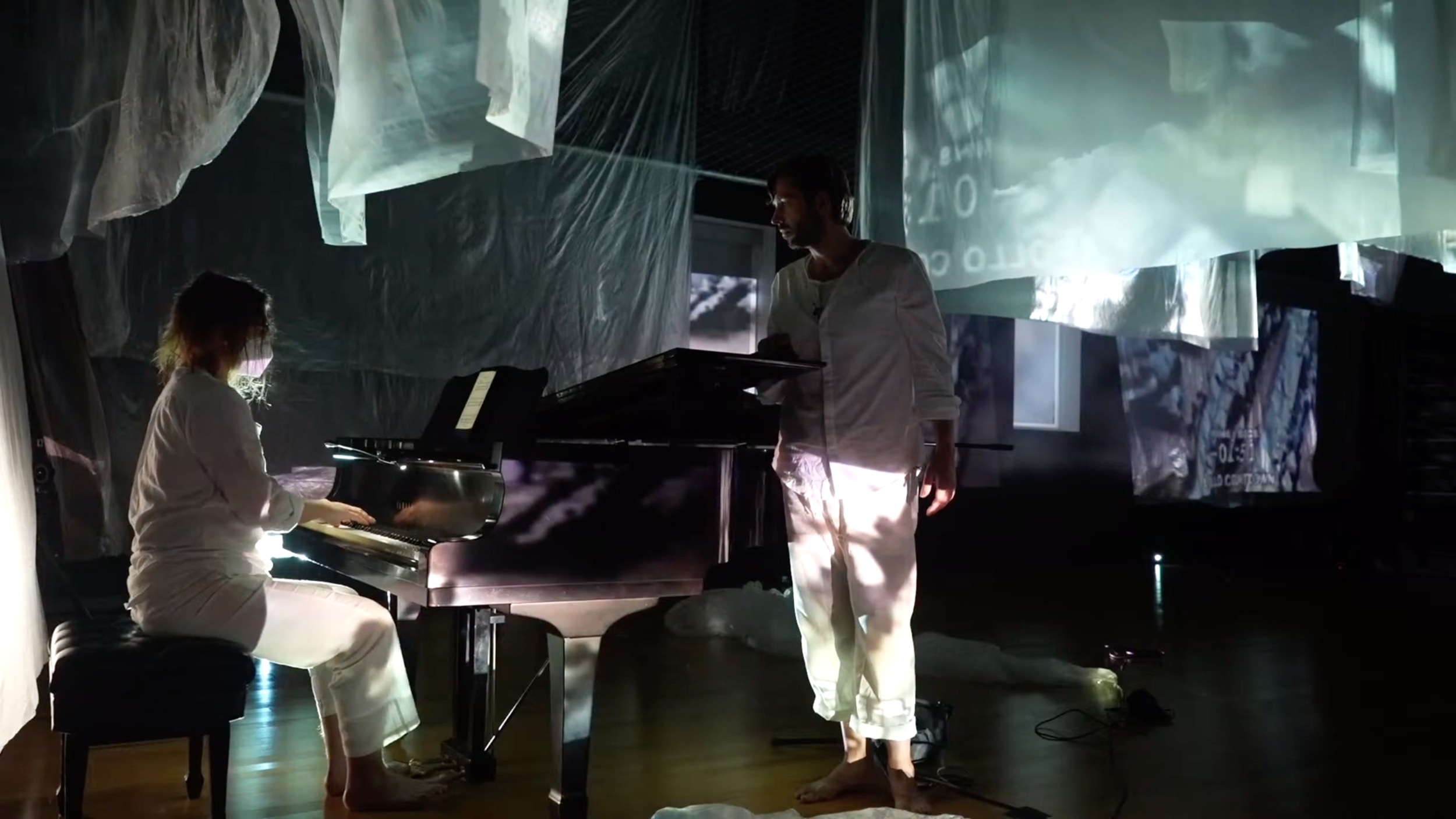JOSHUA MORENO, sculpture artist
JONATHAN NUSSMAN, baritone
KYLE ADAM BLAIR, pianist
LESLIE ANN LEYTHAM, director
“Oh mankind, listen! What is the deep midnight saying?”
Pascal Dusapin’s O Mensch! is a cycle of songs for voice and piano, all settings of lyrical texts by German philosopher Friedrich Nietzsche (1844-1900). The work bears the subtitle “An unreasoned inventory of some Nietzschean passions”, and as such it attempts to create an evolving musical and dramatic space for exploring the enigmatic meanings of these extraordinary poems. The 75-minute work sits comfortably within the tradition of the 19th century Germanic song cycle, but as it progresses Dusapin imbues it with subtle dramatic and theatrical elements. The original performance by Georg Nigl and Vanessa Wagner was staged by the composer himself as a sort of mono-opera.
The cycle opens with the singer and piano in unison—a single voice calling from the silence and blossoming into rich harmony. This effect evocatively suggests a point of light appearing in a darkened expanse, and while Dusapin never repeats this specific musical gesture, the phrase itself becomes the source of the majority of the cycle’s harmonic and motivic material. The text of this opening song is the iconic roundelay from Also sprach Zarathustra, a poem of rich musical history which exhorts the passive listener to search for profound truths in the depths of night’s silence. From there, the composer selects texts drawn from Nietzsche’s lifetime of writings, weaving them into a fragmented and elusive emotional narrative. The music often unfolds slowly in an expansive state of harmonic stasis, only occasionally interrupted by fleeting fits of emotional violence. The arrival of “Das Nachtlied” (another Zarathustra text) at the exact midpoint of the cycle introduces an increasingly bitter and caustic character which pervades the work’s more volatile second half.
Many of Dusapin’s musical influences are readily apparent: Schubert and Schumann are embedded in the very DNA of the song cycle; Messiaen’s mystical atemporality and Poulenc’s wearied emotional directness permeate; Wagner is quoted explicitly. In the vocal writing, Dusapin’s self-professed goal is to achieve the kind of flexible expressivity found in the operas of Monteverdi. Also in the score are recurring features of Dusapin’s larger output, including a keen ear for shifts in timbre, rhythmic inventiveness, metric flexibility, and a deep love of lullabies.
THE PRACTICE ROOM
Click the images below to view rehearsal images and videos, as well as get to know the artists and hear their thoughts on making art in the time of COVID-19.
PRODUCTION STILLS

















![PROJECT [BLANK]](http://images.squarespace-cdn.com/content/v1/669ee7a1919abe25058154e0/ecdcf53c-e848-48f1-94e4-cbc3c0ff694e/2020_21+Logo+Straight.png?format=1500w)





